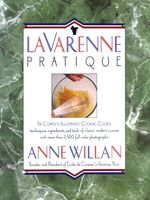Advertisement
Essentials of a Good Sauce
Appears in
By Anne Willan
Published 1989
Thick or thin, light or dark and irrespective of its origins, a well-made sauce should have the following characteristics. It should have a distinctive texture: unctuous for mayonnaise, frothy for sabayon, glossy for brown demi-glace sauce. It should have body, with flavors concentrated to just the right degree, mild or pungent, to complement the rest of the dish. Color, too, should accent the dish: pair white butter sauce with a salmon mousseline, or a yellow mustard sauce with kidneys.
Equally important to a sauce is consistency. Velouté sauces and white butter sauces should form a semi-transparent veil over the food, while brown sauces should be translucent, giving a light glaze to the meats beneath. Some sauces are as light as oil, with no added thickener at all. Only white sauces, hollandaise and béarnaise sauces, some pasta sauces and some sweet sauces are thick enough to coat ingredients. Even then, the shape and color of the food beneath should be discernible. A sauce should never be glutinous, even when designed to bind soufflés or to enrich gratins of vegetables that have a high water content.

